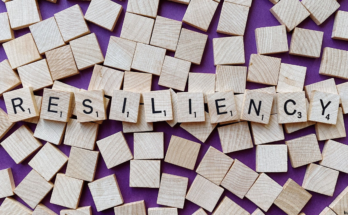Sustainability is no longer just a trend—it’s a necessity. Consumers, investors, and governments are increasingly prioritizing businesses that incorporate sustainable practices into their operations. In 2025, companies that embrace green initiatives not only contribute to the planet’s health but also position themselves for long-term profitability.
This article explores how businesses can integrate sustainability into their operations and turn these efforts into a competitive advantage.
Why Sustainability Matters in 2025
1. Consumer Demand for Eco-Friendly Products
Today’s consumers are more eco-conscious than ever, seeking products and services that align with their values. Studies show that customers are willing to pay a premium for sustainable goods.
2. Regulatory Pressures
Governments worldwide are imposing stricter environmental regulations, from carbon emission limits to waste reduction mandates. Adopting sustainable practices ensures compliance and avoids penalties.
3. Competitive Differentiation
Sustainability can be a unique selling point, helping businesses stand out in crowded markets.
4. Financial Incentives
Many governments and organizations offer tax breaks, grants, and incentives for companies adopting green technologies and practices.
Building a Sustainable Business Model
1. Reducing Energy Consumption
Energy efficiency is a cornerstone of sustainable business practices.
- Adopt Renewable Energy: Transition to solar, wind, or other renewable energy sources to power operations.
- Implement Energy-Efficient Technologies: Upgrade to energy-saving equipment, such as LED lighting and smart thermostats.
- Monitor Usage: Use AI and IoT devices to track and optimize energy consumption.
Example:
A small manufacturing firm reduced its energy costs by 30% by installing solar panels and switching to energy-efficient machinery.
2. Embracing the Circular Economy
The circular economy focuses on minimizing waste and maximizing resource efficiency by designing products for reuse, repair, and recycling.
- Product Lifecycle Extension: Create durable products that can be easily repaired or upgraded.
- Recycling Programs: Offer incentives for customers to return used products for recycling.
- Upcycling: Transform waste materials into new products.
Example:
A fashion brand launched a recycling initiative where customers could trade old clothes for discounts, reducing waste while fostering customer loyalty.
3. Sustainable Supply Chain Practices
A business’s sustainability efforts extend beyond its operations to its suppliers and partners.
- Choose Eco-Friendly Suppliers: Partner with vendors committed to sustainable practices.
- Optimize Logistics: Use AI to minimize fuel consumption in transportation and adopt electric vehicles for delivery.
- Fair Trade: Support suppliers that adhere to ethical labor practices.
Example:
A coffee shop chain sources beans from fair-trade farms and uses AI to plan delivery routes, reducing fuel costs and emissions.
4. Waste Management and Reduction
Proper waste management benefits the environment and cuts costs.
- Minimize Packaging: Switch to biodegradable or reusable packaging.
- Composting: Turn organic waste into compost for landscaping or community projects.
- Digitalization: Reduce paper usage by transitioning to digital documentation and billing.
Example:
A tech company eliminated paper contracts in favor of e-signatures, saving thousands of dollars annually while reducing paper waste.
Communicating Sustainability Efforts
Transparency is key when promoting sustainability. Customers want to support businesses that are genuinely committed to making a difference.
1. Share Your Progress
- Use social media and your website to highlight sustainability milestones.
- Publish an annual sustainability report detailing initiatives and outcomes.
2. Certifications and Labels
- Obtain recognized certifications like LEED, Fair Trade, or ISO 14001 to validate your efforts.
- Use eco-friendly labels on products to attract conscious consumers.
3. Engage Your Customers
- Educate your audience on how your initiatives impact the environment.
- Involve customers through programs like loyalty rewards for sustainable actions.
Example:
A skincare company uses QR codes on packaging to share detailed information about its eco-friendly sourcing and manufacturing processes.
The Financial Benefits of Sustainability
1. Cost Savings
Sustainable practices often result in significant cost reductions.
- Energy Savings: Renewable energy and efficiency measures lower utility bills.
- Material Savings: Minimizing waste reduces raw material costs.
- Tax Benefits: Many governments offer incentives for adopting green practices.
2. Increased Revenue
- Premium Pricing: Eco-friendly products often command higher prices.
- Expanded Market Reach: Attracting environmentally conscious customers opens new markets.
3. Improved Brand Loyalty
Sustainability fosters trust and loyalty, leading to repeat customers and positive word-of-mouth marketing.
Example:
A local grocery store’s switch to biodegradable bags attracted a wave of environmentally conscious shoppers, boosting sales and market share.
Challenges and Solutions in Implementing Sustainability
While the benefits of sustainability are clear, small businesses may face challenges.
1. Initial Costs
Sustainable technologies and practices often require upfront investments.
- Solution: Start small with cost-effective changes like LED lighting or digital billing. Seek grants and subsidies to offset costs.
2. Knowledge Gaps
Owners may lack the expertise to implement green strategies.
- Solution: Partner with sustainability consultants or participate in training programs.
3. Resistance to Change
Employees or stakeholders may resist adopting new practices.
- Solution: Communicate the benefits of sustainability clearly and involve employees in decision-making.
Sustainable Business Success Stories
1. Patagonia
The outdoor clothing brand has built its reputation on sustainability, from using recycled materials to encouraging customers to repair and reuse products. This approach has earned them a loyal customer base and strong financial performance.
2. IKEA
IKEA has committed to becoming climate-positive by 2030. Their efforts include sourcing sustainable materials, investing in renewable energy, and launching furniture buy-back programs.
3. Local Success: Green Café
A small café reduced its environmental footprint by switching to reusable cups, sourcing ingredients locally, and composting food waste. These initiatives attracted eco-conscious customers, resulting in a 25% increase in revenue.
Future Trends in Sustainable Business
1. Green Technology Adoption
Businesses will increasingly adopt technologies like carbon capture, water recycling systems, and AI-driven energy management.
2. Sustainable Financing
Banks and investors are prioritizing businesses with strong ESG (Environmental, Social, and Governance) practices.
3. Collaborative Ecosystems
Companies will partner with competitors and communities to tackle shared sustainability challenges.
Conclusion
Sustainability is no longer optional—it’s a strategic imperative for businesses in 2025. By adopting green initiatives, companies can reduce costs, enhance brand loyalty, and open new revenue streams.
Turning sustainability into profitability requires a clear strategy, transparent communication, and a commitment to continuous improvement. As the world moves toward a greener future, businesses that embrace sustainability today will lead tomorrow.
Are you ready to make sustainability your competitive advantage? Start today, and reap the rewards for years to come.




